Abstract
Between 1992 and 1995 a series of studies was undertaken to assess the long-term suitability of pyrethroid-impregnated bednets (PIBs) for malaria control in Afghan refugee communities in two villages in North-West Frontier Province, Pakistan. During 1992, 86% of bednet owners volunteered to have their bednets re-impregnated, and a further 15% of families purchased nets at two-thirds of cost price. From 1992 onwards, 27% of the villagers returned to Afghanistan, and annual house spraying campaigns were introduced to protect those still resident but sleeping without bednets. Within 3 years, these campaigns, together with PIBs, reduced the annual incidence of malaria by 87%, from 597 to 78 cases per 1000 population. Nevertheless, 65% of resident families continued to re-impregnate their nets annually with permethrin. To assess whether PIBs were still being used and were still protective, in view of these reduced transmission rates, we carried out a case--control study in 1994 on febrile or otherwise symptomatic patients presenting at village health centres. Comparison of the slide-positivity rates of PIB users and those without bednets showed that regular usage reduced the odds of contracting falciparum and vivax malaria to 0.22 (95% confidence interval (CI): 0.09-0.55) and 0.31 (95% CI: 0.19-0.51), respectively. There was no evidence of a sex- or age-bias in bednet use or in protective effect. The results indicate that a community-based PIB programme is an appropriate malaria control measure in areas where management or security problems make traditional house-spraying campaigns impossible. A relevant finding for those involved in the monitoring of bednet distribution projects is that the local coverage of bednets and the local impact on malaria, even when introduced to remote areas, can be estimated very cheaply by health centre microscopists who simply catalogue blood film diagnoses according to patients' bednet use practices.
Full text
PDF
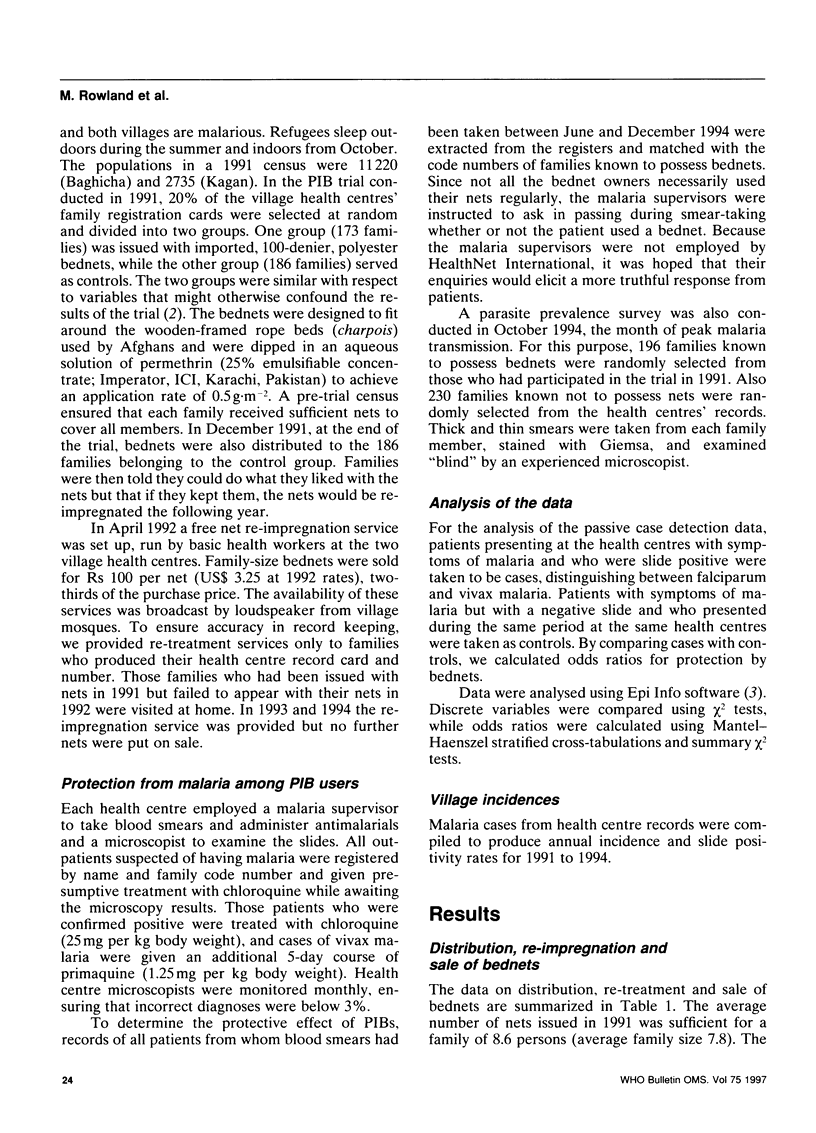
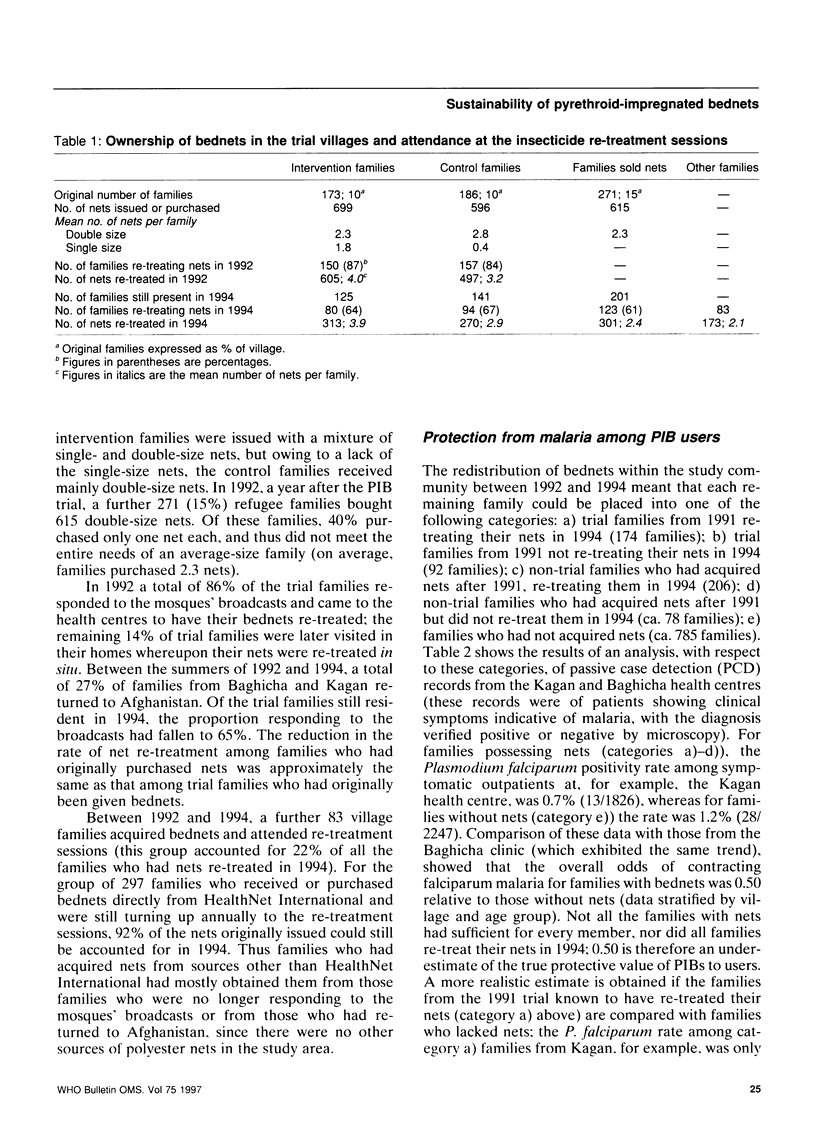
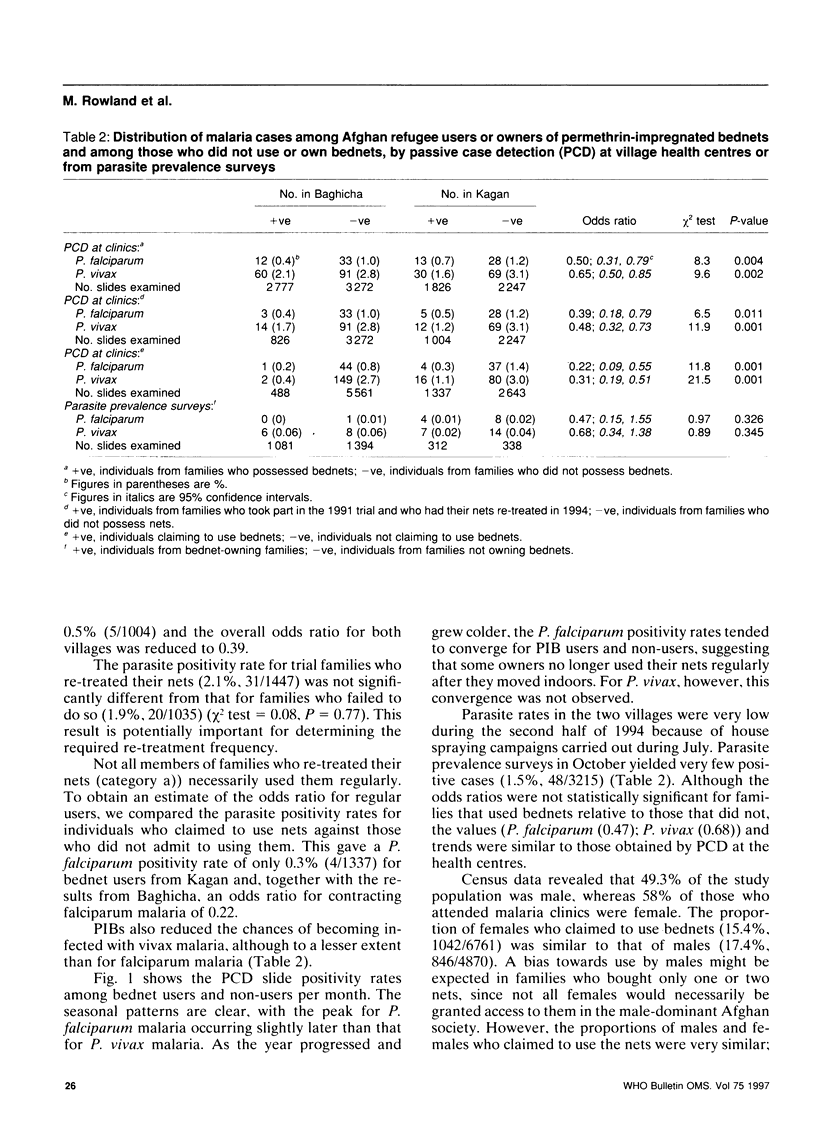
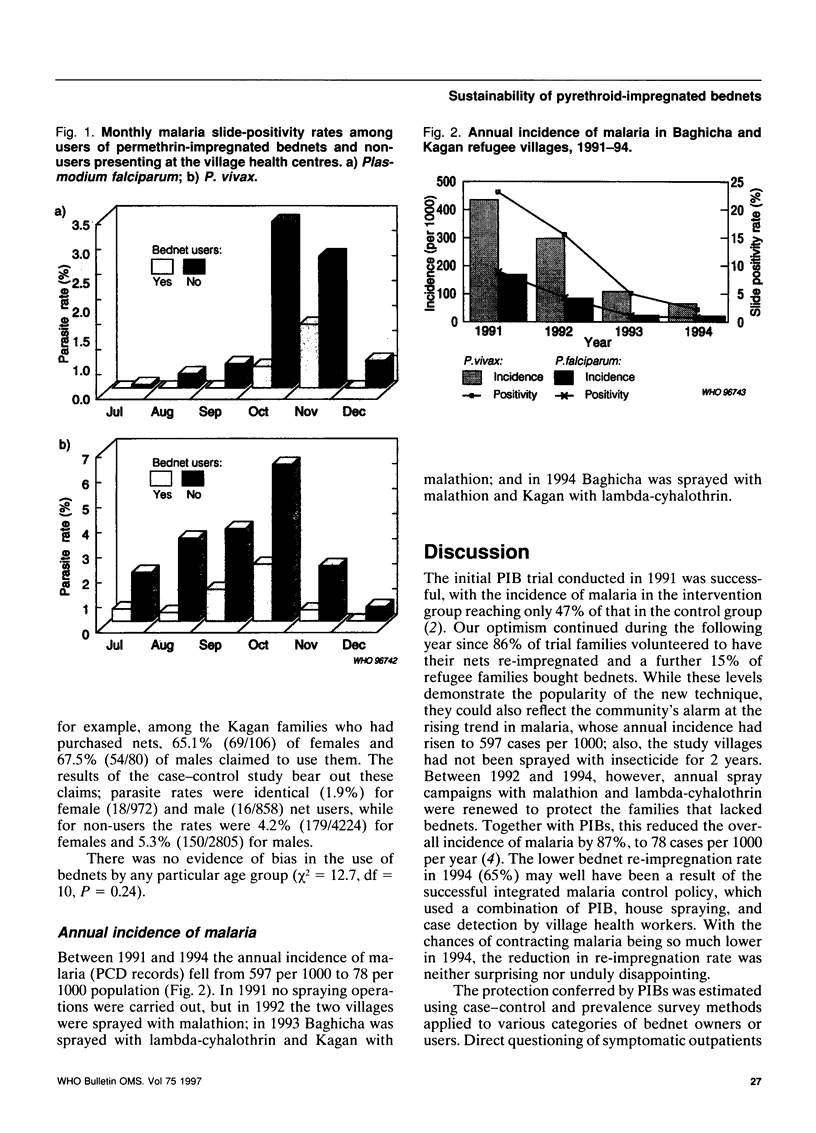
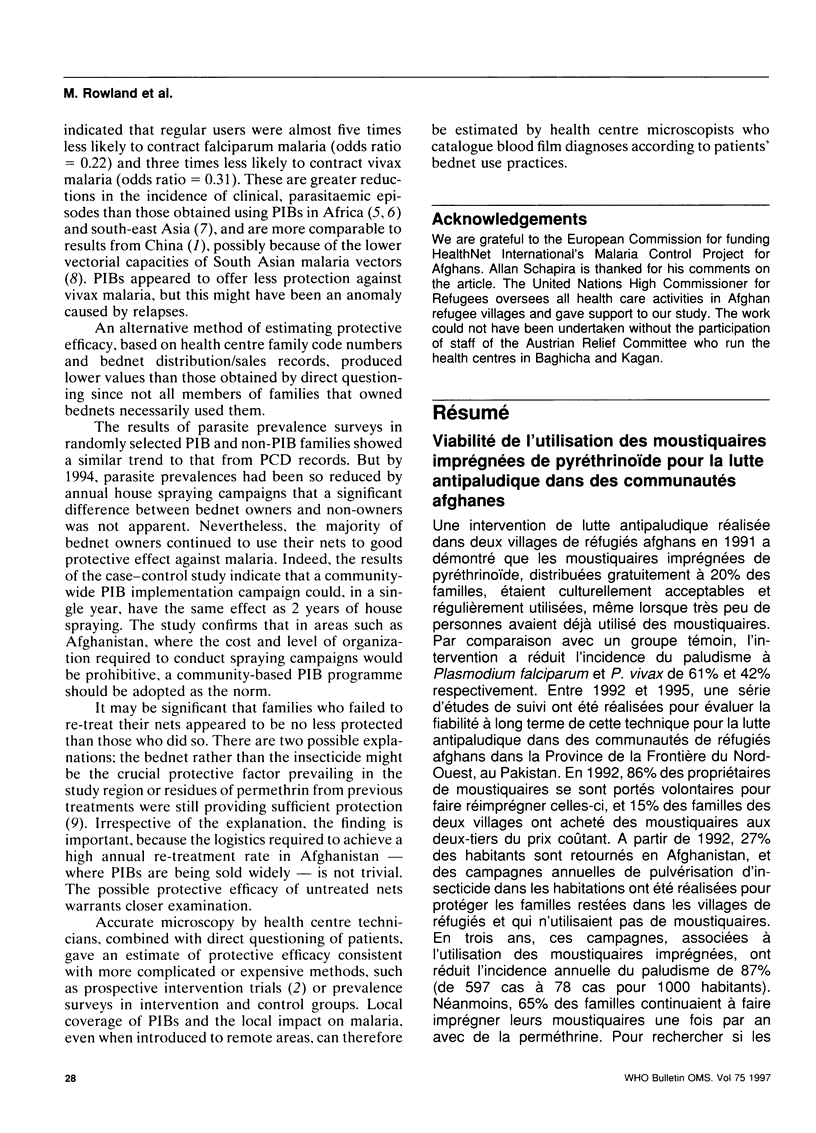
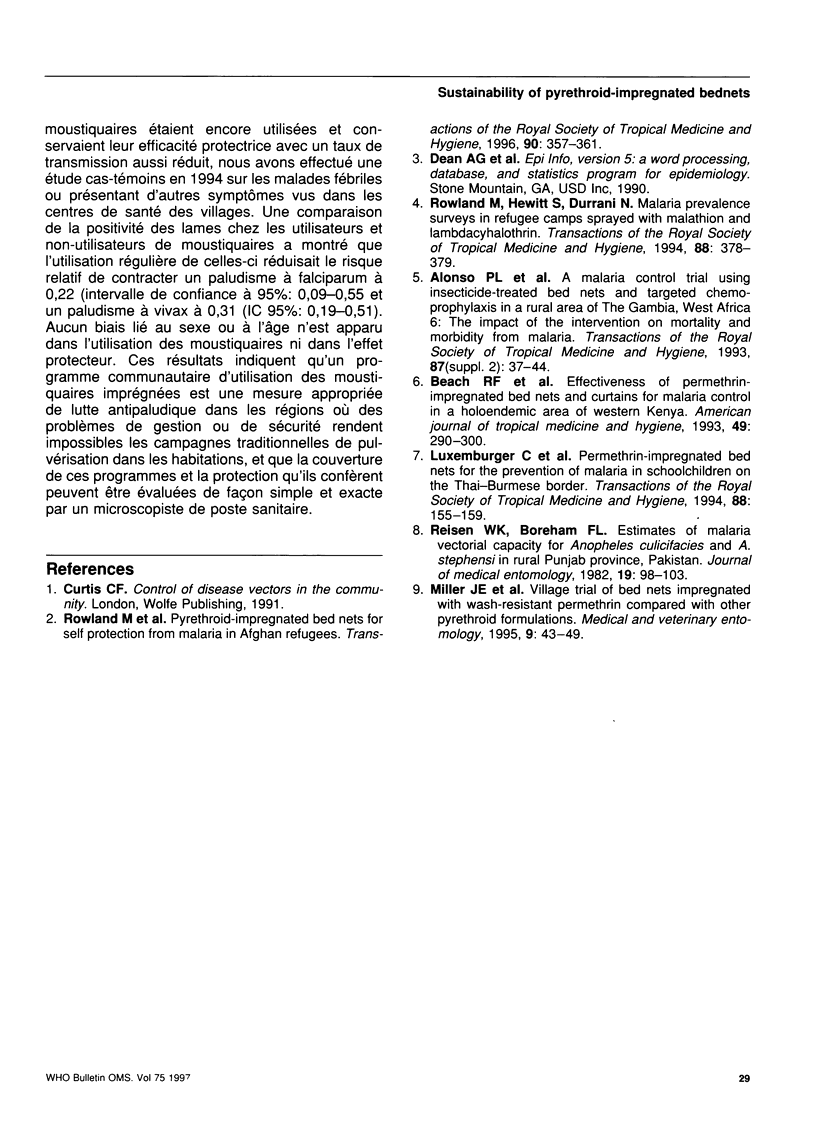
Selected References
These references are in PubMed. This may not be the complete list of references from this article.
- Beach R. F., Ruebush T. K., 2nd, Sexton J. D., Bright P. L., Hightower A. W., Breman J. G., Mount D. L., Oloo A. J. Effectiveness of permethrin-impregnated bed nets and curtains for malaria control in a holoendemic area of western Kenya. Am J Trop Med Hyg. 1993 Sep;49(3):290–300. doi: 10.4269/ajtmh.1993.49.290. [DOI] [PubMed] [Google Scholar]
- Luxemburger C., Perea W. A., Delmas G., Pruja C., Pecoul B., Moren A. Permethrin-impregnated bed nets for the prevention of malaria in schoolchildren on the Thai-Burmese border. Trans R Soc Trop Med Hyg. 1994 Mar-Apr;88(2):155–159. doi: 10.1016/0035-9203(94)90273-9. [DOI] [PubMed] [Google Scholar]
- Miller J. E., Lindsay S. W., Armstrong Schellenberg J. R., Adiamah J., Jawara M., Curtis C. F. Village trial of bednets impregnated with wash-resistant permethrin compared with other pyrethroid formulations. Med Vet Entomol. 1995 Jan;9(1):43–49. doi: 10.1111/j.1365-2915.1995.tb00115.x. [DOI] [PubMed] [Google Scholar]
- Reisen W. K., Boreham P. F. Estimates of malaria vectorial capacity for Anopheles culicifacies and Anopheles stephensi in rural Punjab province Pakistan. J Med Entomol. 1982 Jan 28;19(1):98–103. doi: 10.1093/jmedent/19.1.98. [DOI] [PubMed] [Google Scholar]
- Rowland M., Hewitt S., Durrani N. Prevalence of malaria in Afghan refugee villages in Pakistan sprayed with lambdacyhalothrin or malathion. Trans R Soc Trop Med Hyg. 1994 Jul-Aug;88(4):378–379. doi: 10.1016/0035-9203(94)90388-3. [DOI] [PubMed] [Google Scholar]


